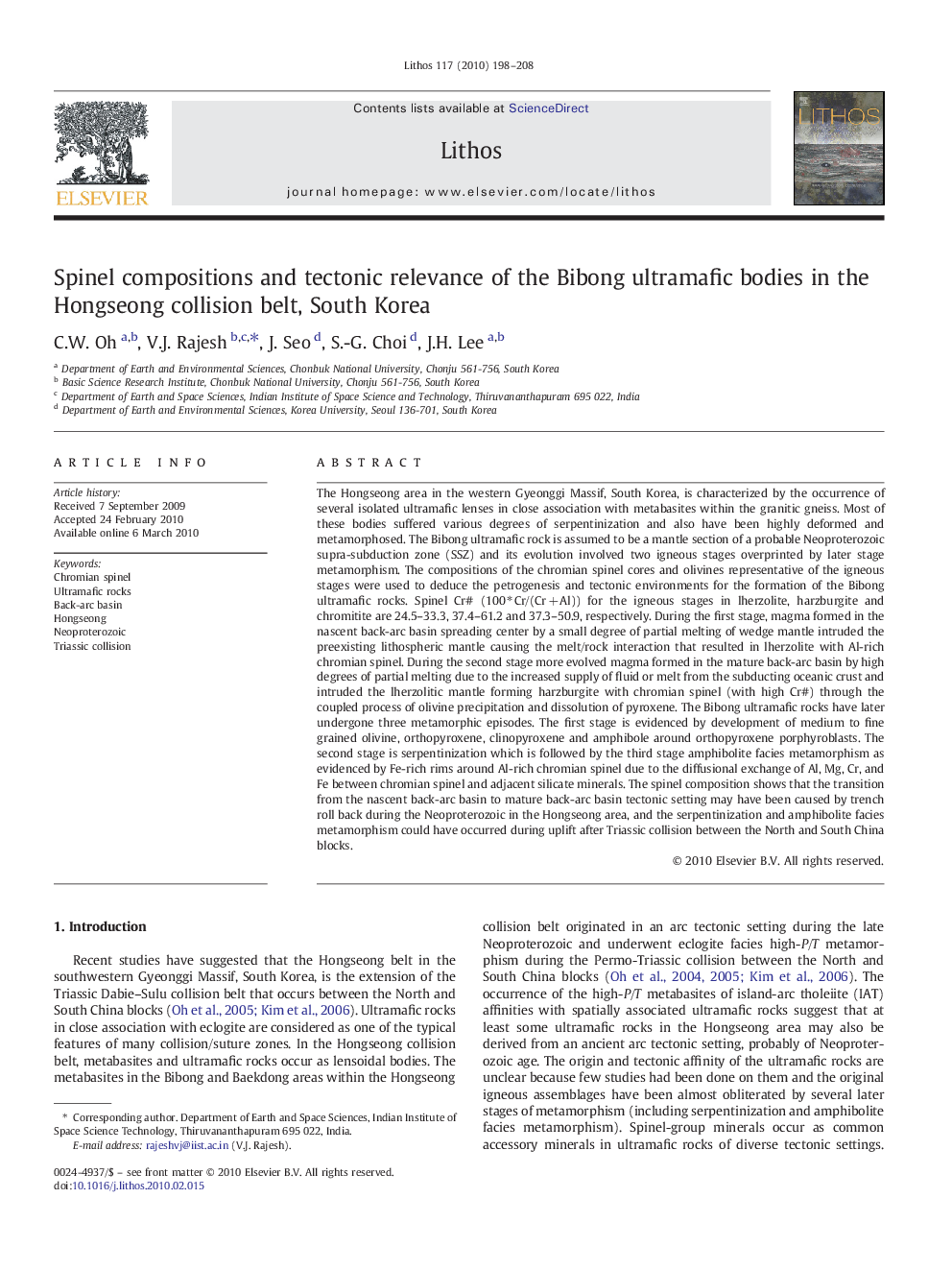| کد مقاله | کد نشریه | سال انتشار | مقاله انگلیسی | نسخه تمام متن |
|---|---|---|---|---|
| 4716988 | 1638732 | 2010 | 11 صفحه PDF | دانلود رایگان |
عنوان انگلیسی مقاله ISI
Spinel compositions and tectonic relevance of the Bibong ultramafic bodies in the Hongseong collision belt, South Korea
دانلود مقاله + سفارش ترجمه
دانلود مقاله ISI انگلیسی
رایگان برای ایرانیان
کلمات کلیدی
موضوعات مرتبط
مهندسی و علوم پایه
علوم زمین و سیارات
ژئوشیمی و پترولوژی
پیش نمایش صفحه اول مقاله

چکیده انگلیسی
The Hongseong area in the western Gyeonggi Massif, South Korea, is characterized by the occurrence of several isolated ultramafic lenses in close association with metabasites within the granitic gneiss. Most of these bodies suffered various degrees of serpentinization and also have been highly deformed and metamorphosed. The Bibong ultramafic rock is assumed to be a mantle section of a probable Neoproterozoic supra-subduction zone (SSZ) and its evolution involved two igneous stages overprinted by later stage metamorphism. The compositions of the chromian spinel cores and olivines representative of the igneous stages were used to deduce the petrogenesis and tectonic environments for the formation of the Bibong ultramafic rocks. Spinel Cr# (100 â Cr/(Cr + Al)) for the igneous stages in lherzolite, harzburgite and chromitite are 24.5-33.3, 37.4-61.2 and 37.3-50.9, respectively. During the first stage, magma formed in the nascent back-arc basin spreading center by a small degree of partial melting of wedge mantle intruded the preexisting lithospheric mantle causing the melt/rock interaction that resulted in lherzolite with Al-rich chromian spinel. During the second stage more evolved magma formed in the mature back-arc basin by high degrees of partial melting due to the increased supply of fluid or melt from the subducting oceanic crust and intruded the lherzolitic mantle forming harzburgite with chromian spinel (with high Cr#) through the coupled process of olivine precipitation and dissolution of pyroxene. The Bibong ultramafic rocks have later undergone three metamorphic episodes. The first stage is evidenced by development of medium to fine grained olivine, orthopyroxene, clinopyroxene and amphibole around orthopyroxene porphyroblasts. The second stage is serpentinization which is followed by the third stage amphibolite facies metamorphism as evidenced by Fe-rich rims around Al-rich chromian spinel due to the diffusional exchange of Al, Mg, Cr, and Fe between chromian spinel and adjacent silicate minerals. The spinel composition shows that the transition from the nascent back-arc basin to mature back-arc basin tectonic setting may have been caused by trench roll back during the Neoproterozoic in the Hongseong area, and the serpentinization and amphibolite facies metamorphism could have occurred during uplift after Triassic collision between the North and South China blocks.
ناشر
Database: Elsevier - ScienceDirect (ساینس دایرکت)
Journal: Lithos - Volume 117, Issues 1â4, June 2010, Pages 198-208
Journal: Lithos - Volume 117, Issues 1â4, June 2010, Pages 198-208
نویسندگان
C.W. Oh, V.J. Rajesh, J. Seo, S.-G. Choi, J.H. Lee,